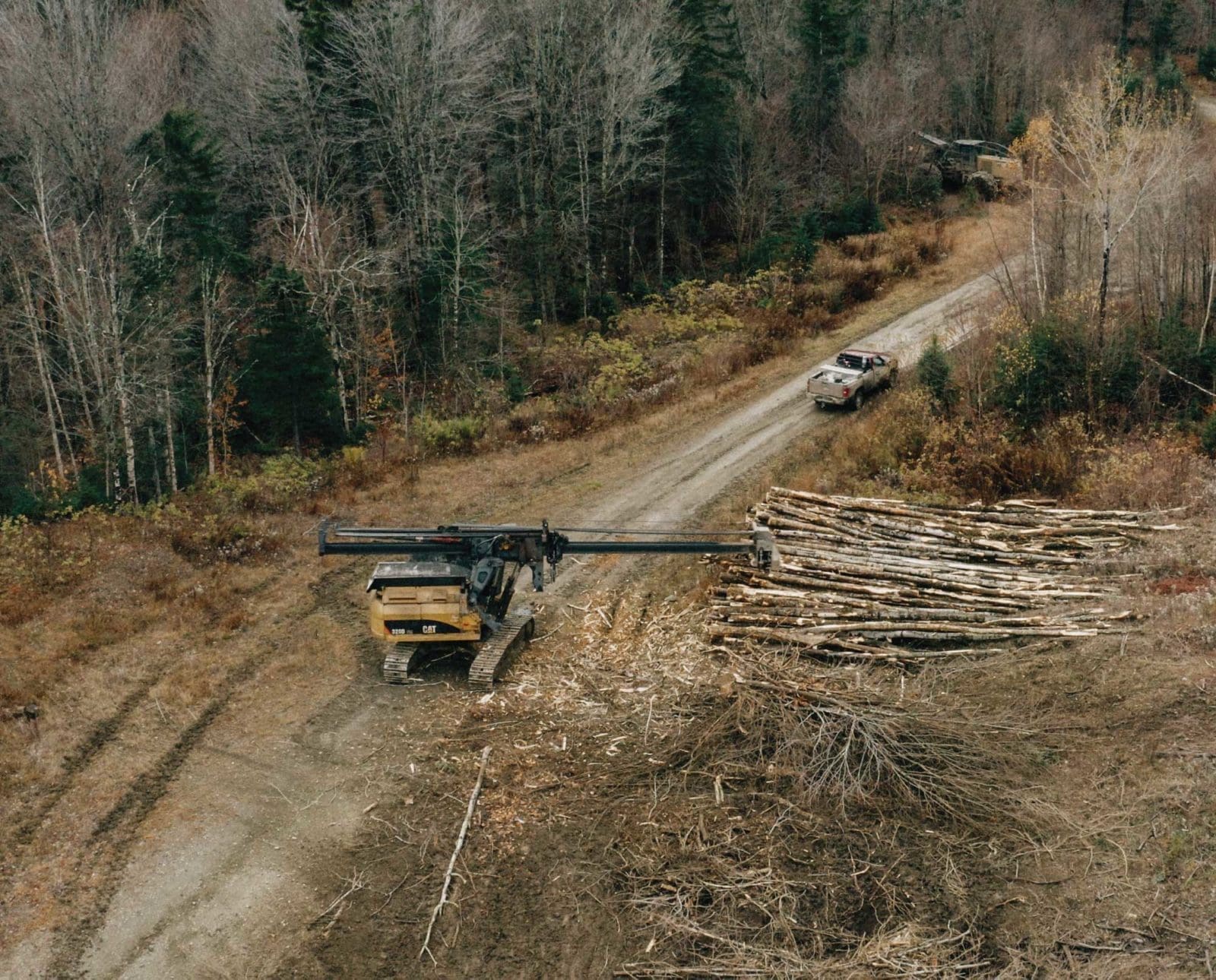Home » Hunting Policy » The Rural Forest Markets Act: Aid to Private Forest Owners
The Rural Forest Markets Act: Aid to Private Forest Owners

Andrew Spellman is an award-winning photojournalist and author. A 2017…
Another voluntary incentive program may be coming to the American conservation arena and provide funds for private forest management
WASHINGTON, D.C. – There’s only so much a Presidential administration can do when releasing a broad initiative. Most recently, Joe Biden’s 30 by 30 plan, toeing the line of ambiguity and laid out in a 23-page plan, has brought with it chatter of another “federal land grab” or reluctant acceptance by pockets of Americans in regions where politicians and developers have promised sustainable jobs for decades, only to prosper off the goodwill of said Americans.
Yet, while there’s only so much an administration can do, Congress can do plenty to push sensible legislation to support that initiative and prove such chatter is unfounded fearmongering. And with bipartisan support, it goes to benefit all stakeholders.
Tiffany Turner, Director of Climate Solutions with the Theodore Roosevelt Conservation Partnership and a Kentuckian by birth, knows all too well the legitimate fear and distrust Appalachian-Americans have when it comes to congressmen and women promising a grand bill that will support their bottom line and also protect wildlife species that matter, such as the ruffed grouse, American woodcock, and northern bobwhite quail that are in dire need of landscape-level support. To Turner, the Rural Forest Markets Act of 2021—a young piece of legislation—will provide private landowners with the needed funds and incentives to bolster the timber market while providing the much-needed habitat that many species require.
“Acts like this give financial availability for small farmers and small foresters to have access to capital that will allow them to sustainably manage their forests,” Turner said. “There are lots of barriers—and capital is naturally one of them—that keep a small forester from actively managing their forest. If there’s a change to the capital gains tax, they would not want to cut that old-growth and plant new trees because there would be a tax implication for them. This type of Act allows them to make those decisions to make it sustainable, which brings that natural wildlife habitat with it.”
Still, since that the bill is in the early stages, some questions arise.
What is the Rural Forest Markets Act and how will it help private landowners?
The Rural Forest Markets Act of 2021 is a comprehensive piece of legislation that, if passed, will direct the U.S. Department of Agriculture (USDA) to “establish the Rural Forest Market Investment Program to guarantee investments to finance certain projects that will enable rural private forest landowners to participate in an innovative market for forest carbon or other products.”
“There are a lot of problems that are existing that could be improved to give them help, but this is new and innovative because it allows for a voluntary program to incentivize landowners to participate in climate solutions,” Turner said. “It also recognizes the ones that are already doing the work—a lot of times new bills, programs, or incentives to existing programs will only allow people to opt-in for new work, but this recognizes those who are already doing work.”
As with most conservation legislation, this will also aid in job creation.
“This work aligns really well with work the TRCP has going on now, specifically ‘Conservation Works for America,’” Turner said. “It released the economy report in May and there’s some data around the concept of economically beneficial investments: planting of trees, restoring watersheds. Those restoration economy jobs, they create 17.4 jobs per every million in federal investments, so this type of work should be directly in line with that.”
A potential lack of skilled labor and an inherent fear
Although conservation legislation does lead to a new swath of jobs—something that should be held in high regard as the U.S. begins to rebound from the economic devastation of the COVID-19 pandemic—it’s worth noting that conservation programs used as a marker for today’s initiatives (see Franklin Roosevelt’s New Deal jobs) were passed in a generation where basic labor abilities, mechanical know-how, and other life skills were a means of day-to-day life and survival. In today’s world, there could be a shortage of Americans with the necessary skills to hit the ground running in this field.
However, folks in the declining parts of the energy sector do have the necessary skills and could find sustainable jobs in conservation.
“What we focus on is policy and partnership for that,” Turner said of the lack of skilled labor. “The idea is pulling a lot of levers in the public realm to make sure there’s skilled labor. That’s one of the priorities for the Forest Working Group, and within the infrastructure sub-team, we’re beginning the conversations around how to improve that skilled labor concept. I’m from Kentucky, in the mountains in a really small town where Virginia, Tennessee, and Kentucky all come together and it’s deeply impacted by coal mining. There’s an opportunity here to give people jobs that they didn’t have.”
“This is a fantastic Act and it’s fantastic that it’s bipartisan. I think it’s ideally Americana: both sides of the aisle coming together, using a market-based solution while recognizing the little guy, the small family business in forestry, to provide a solution to the biggest problem facing our planet. This bill can and should pass and would do many wonderful things, but there are other legislative vehicles and/or policy changes that could be made to support getting that skilled labor and to enable through other market-based solutions new businesses to be created in this space.”
It’s no secret that the coal industry is in decline, and the oil and gas industry will likely face new hurdles with a Democratic administration holding the White House, so providing options that not only support American workers financially but help reduce the impacts of climate change is a win-win. There will be a hesitancy in some areas of the country, though. There’s no doubt that Appalachia will benefit most from this legislation, but the region’s inhabitants are cautious of the government and outside corporations—for good reason, considering the long history of abuse and broken promises from both businessmen and politicians.
“We’re not just afraid of just extractives, we’re often afraid of the government,” Turner said. “There’s a history of exploitation or promises not kept. Most people would have that drum to beat where we’re from, which might be a hindrance to executing this grand dream. This is so idealistic that you would use money to help fix the problem and acknowledge the little guy, but they’re going to be hesitant or suspicious. I think with the right incentives noted and with the idea that industry is leaving the region, this is an opportunity for people with the right training and skillsets in place to be able to revitalize their community in a way that they hadn’t thought of before—beautify it in a way they hadn’t thought of before.”
And about Biden’s plan being a “land grab?” That, too, is born of fear.
“Isn’t it so interesting how fear becomes the language that we grab onto the most? The land grab conversation is a conversation based solely out of fear,” Turner said. “Speaking back to this concept of who we are as Americans, we value free will and the right to own land. The idea that the government gets too big and comes in and takes something from us has been a theme and fear since the beginning of the country. So it’s not surprising that would come up, but it’s disappointing that so many people jump on it and use it as a way to drum up fear and keep you from employing great ideas and programs like the concept of 30 by 30. It says it’s voluntary. Hopefully, there will be better communication and continued communication using organizations like ours to repeat the message that it is voluntary and isn’t a land grab. This particular bill we’re talking about is an opportunity to align with the messaging and plan with the administration while not being driven by the administration.”
Natural climate solutions, ruffed grouse, and the concept of loving our forests to death
Other folks fear that cutting trees will harm the environment.
Intense logging operations in the late 1800s into the early 1900s did negatively impact the landscape, but we are now seeing the effects of the other side of that pendulum swing. Now, a lack of precise and smart forest management on a national scale is leading to an imbalance of carbon sequestration and a decline of wildlife dependent on mixed-aged forests.
Organizations like the TRCP have been figuring out how to approach this issue, and it comes down to enacting sensible natural climate solutions.
“The TRCP got 41 signing partners onto a climate statement that lays out seven key focus areas, and forests is one of the key focus areas,” Turner said. “The goal is to use nature-based solutions for resiliency and adaptation to the climate. My job is to come up with a three- to five-year plan on how we move the needle on nature-based solutions within those seven focus areas. Active forest management is a balance; the planet is out of balance right now, and we see what happens when it’s out of balance. We have climate change creating broad disasters and extreme weather events. What we are looking and advocating for is active forest management in the general concept of balance, and the way you do that is balance old and new growth; you look for landscape-appropriate and landscape-scale restoration; you increase nursery stock and you increase the stocking of new growth in public and private where available.”
“When you say you can’t cut a tree, you’re not recognizing the way you leave the ecosystem out of balance. Especially in this new, extreme-weather-event, catastrophic-wildfire season-turned-year situation, you’ve created fuel for fire as opposed to helping the ecosystem balance itself. The no-touch system doesn’t work. At the same time, through new planting, you’re providing a solution to the biggest problem facing our planet right now. There’s all this ingrained knowledge and it’s a misconception that if a tree dies and decomposes that the carbon that’s stored in it releases back into the atmosphere, but that’s not true. If you focus on the entire ecosystem or land that you have created through your small forest as a carbon sink and you have to keep the healthy, allowing that new growth to propagate more new growth on its own is allowing an ecosystem or owned forest to work the way it’s supposed to and be a true carbon sink. If it doesn’t work the way it’s supposed to, it becomes carbon fuel—fuel for fire.”
The ruffed grouse has become the poster species for how the lack of habitat can damage wildlife populations, pushing it toward listing under the Endangered Species Act. In Indiana, the bird was added to the state endangered list in 2020, five years after its season was closed to hunting. Other states have closed or reduced their seasons in recent years, too, such as New Jersey and Pennsylvania, respectively.
According to recent numbers from the Ruffed Grouse Society, the ruffed grouse has been listed as a Species of Greatest Conservation Need in 19 states, and, according to a 2017 Northeast game managers’ assessment reported by timberdoodle.org, bird populations in New York, Pennsylvania, Maryland, West Virginia, and Virginia have declined by 30 percent over 30 years.
Outside of a lack of habitat, West Nile Virus (WNV) has decimated ruffed grouse populations below a certain elevation threshold, as have severe weather events. And, driving both the disease and altered weather patterns, is climate change. In a 2019 article by the Dominion Post, former RGS Regional Biologist for the Mid-Atlantic, Southern, and Appalachian States, and current West Virginia Division of Natural Resources small-game biologist, Dr. Linda Ordiway noted, “It’s hard to manage for climate change disease. What we can manage for is habitat. We need to look at areas that are the lowest risk for effects of climate change, some of the diseases—particularly West Nile Virus—and the greatest opportunity to expand current grouse populations.”
Other biologists have noted that with sound habitat, birds will have one less stressor and an increased chance of surviving WNV or a severe weather event. Moreover, many agree that landscape management is needed to truly give ruffed grouse a leg up, and making private forest timber economical through the Rural Forest Markets Act would help fill in habitat gaps. Plus, when forests are managed for ruffed grouse, a host of other species benefit, too.
All in all, it’s up to stakeholders, including hunters and non-hunting conservationists, to work together to solve these issues democratically. This is echoed in the bipartisan support the Rural Forest Markets Act has, as at the moment two Republicans, Sens. Mike Braun (Ind.) and Shelley Moore Capito (W.Va.), and Independent Sen. Angus King (Maine) have cosponsored the bill, introduced by Sen. Debbie Stabenow (D-Mich.).
“The fact that this is bipartisan and innovative is something we support,” Turner said. “We’d want to see more of these types of actions that help the administration work towards goals and help us meet our climate goals as well. It’s not about who you voted for, it’s about smart programs that make sense.”
This is a developing story. Updates will be provided when information becomes available.
Andrew Spellman is an award-winning photojournalist and author. A 2017 graduate of West Virginia University's Reed College of Media, Andrew's work has appeared in multiple newspapers and magazines. He is also an avid hunter and angler who enjoys chasing varying game in his pocket of Appalachia.




Who you vote for does matter, that’s where the programs and the sense begin!!